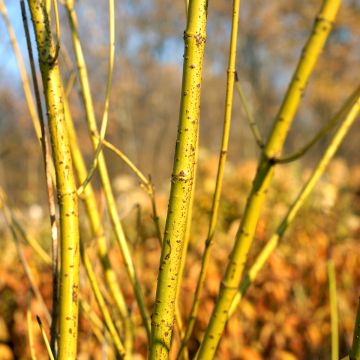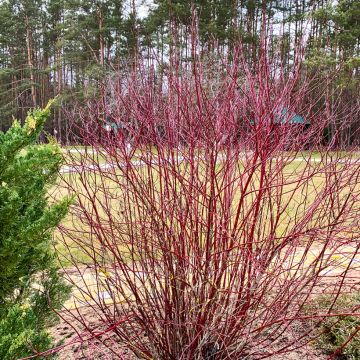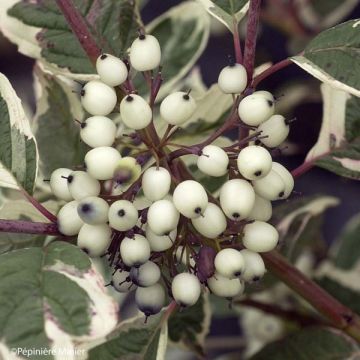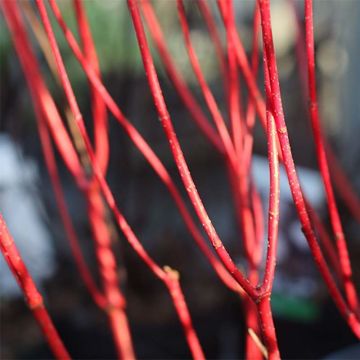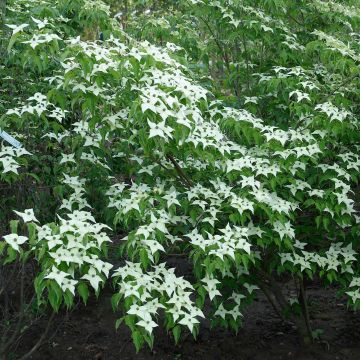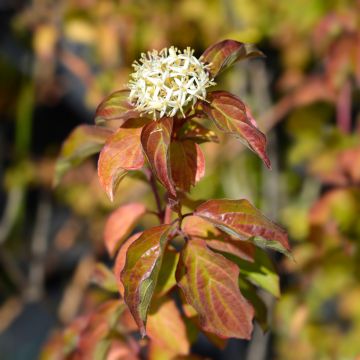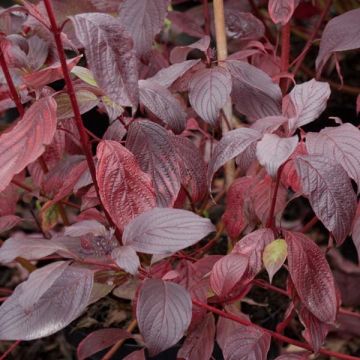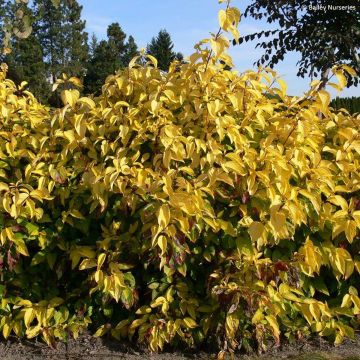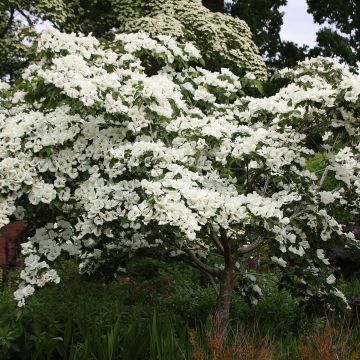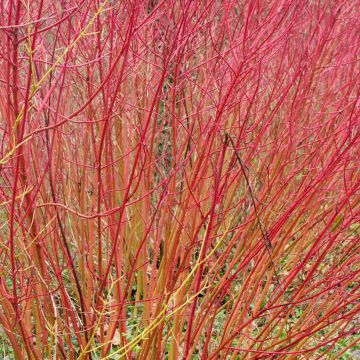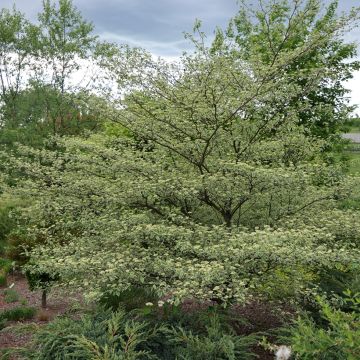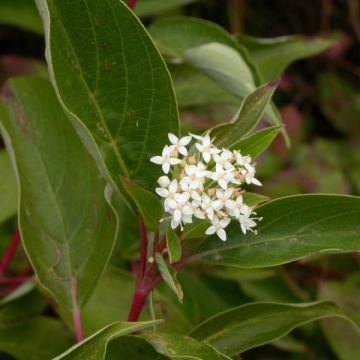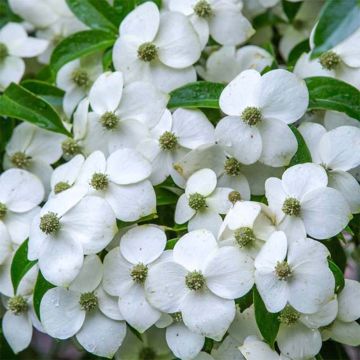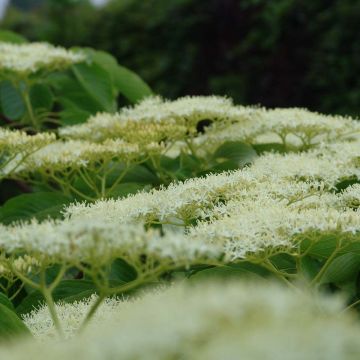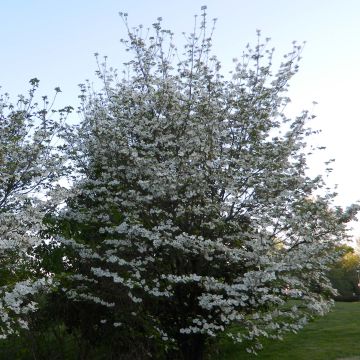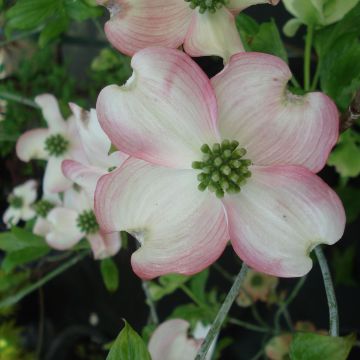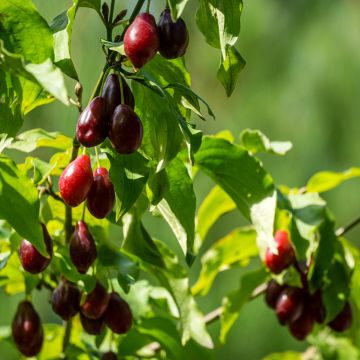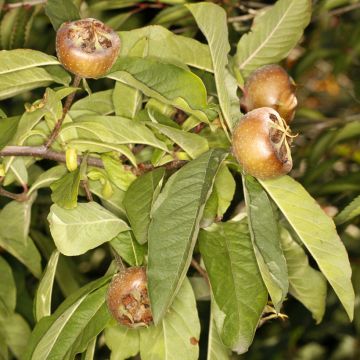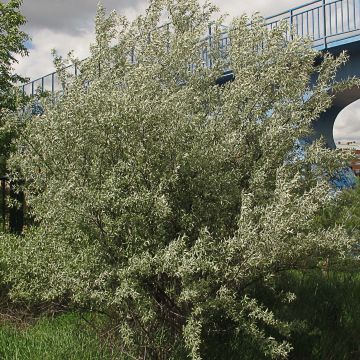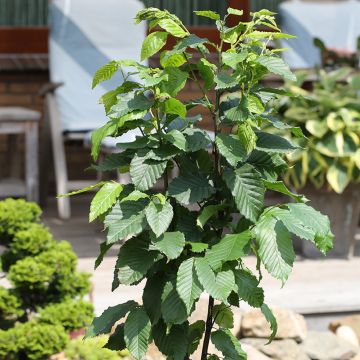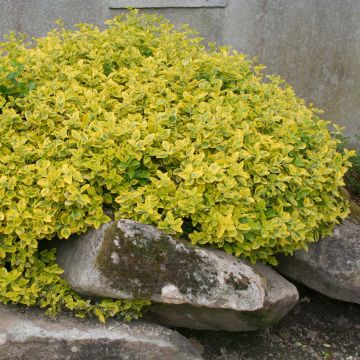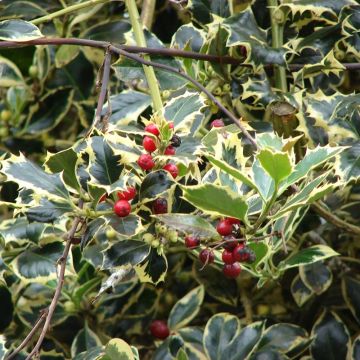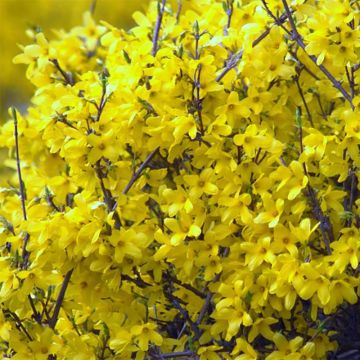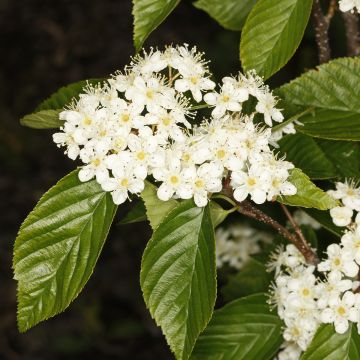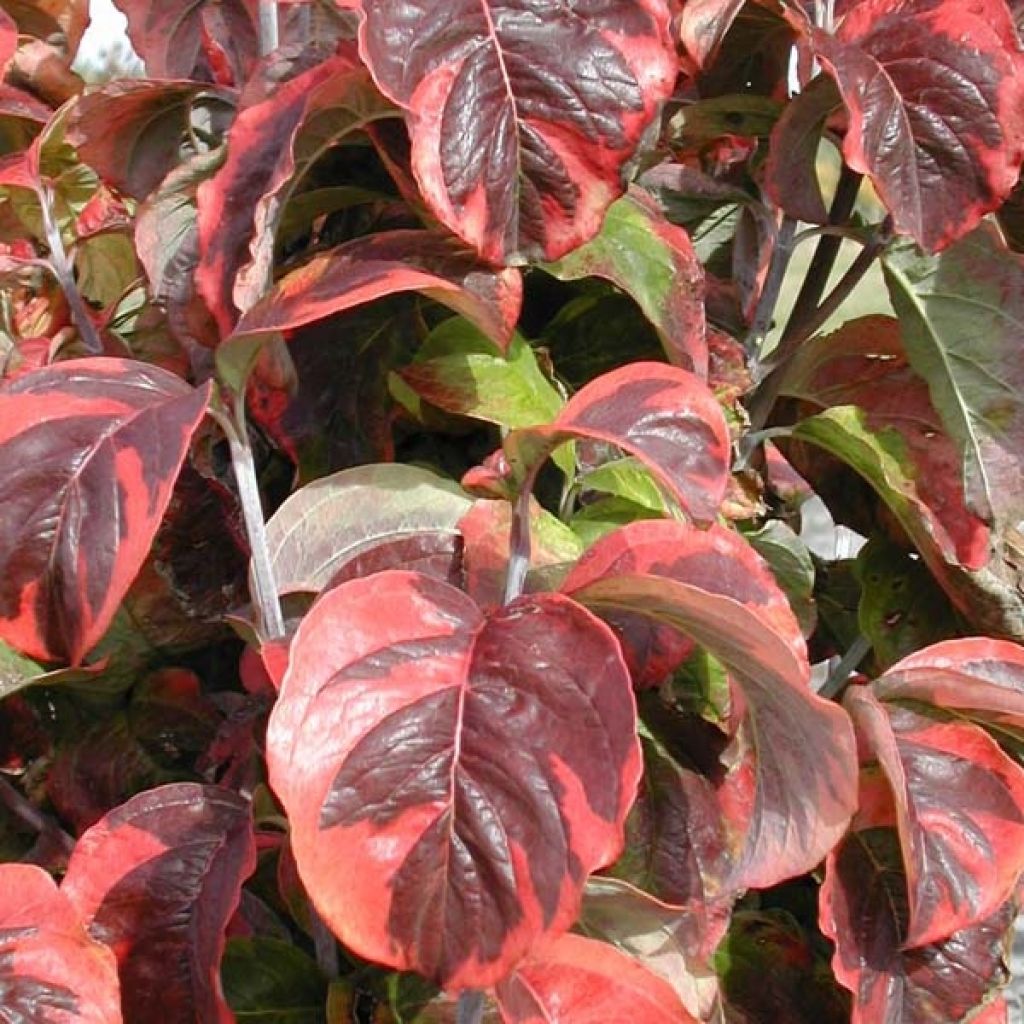

Cornus florida Rainbow - Flowering Dogwood
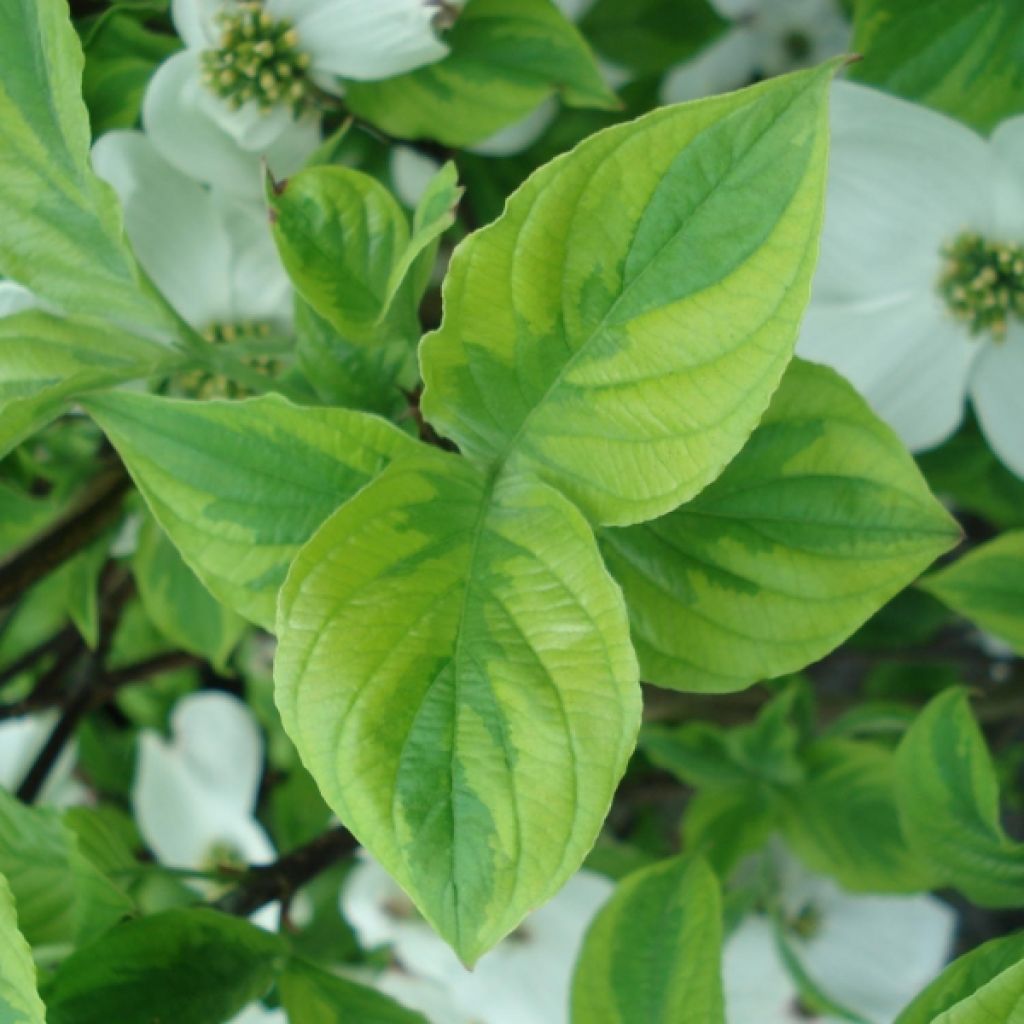

Cornus florida Rainbow - Flowering Dogwood
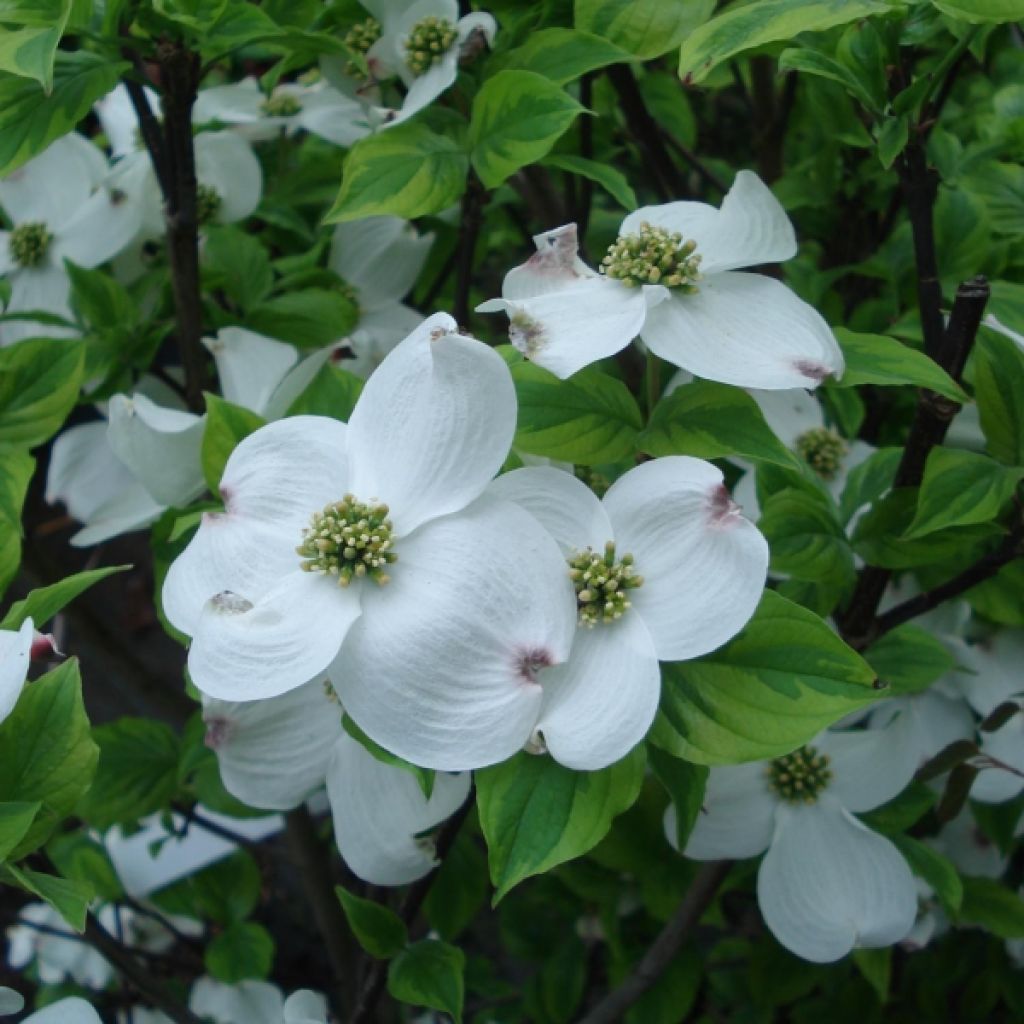

Cornus florida Rainbow - Flowering Dogwood
Cornus florida Rainbow - Flowering Dogwood
Cornus florida Rainbow
Flowering Dogwood, American Dogwood
Why not try an alternative variety in stock?
View all →This plant carries a 24 months recovery warranty
More information
We guarantee the quality of our plants for a full growing cycle, and will replace at our expense any plant that fails to recover under normal climatic and planting conditions.
From €5.90 for pickup delivery and €6.90 for home delivery
Express home delivery from €8.90.
From €5.90 for pickup delivery and €6.90 for home delivery
Express home delivery from €8.90.

Does this plant fit my garden?
Set up your Plantfit profile →
Description
Cornus florida 'Rainbow' is a superb American flowering dogwood, notable for its variegated foliage that changes through the seasons. It is extremely ornamental and produces abundant white flowers that decorate its branches in spring. It is a large deciduous bush that prefers non-calcareous soil, is resistant to cold and well-adapted to hot and humid summers. Interesting for nine months out of twelve, it will make a great impact in the background of a flower bed, as a standalone plant, or in a free hedge.
Cornus florida 'Rainbow' is a cultivar derived from Florida dogwood, a large flowering bush native to regions in the northeast of North America. It belongs to the Cornaceae family. Its growth is relatively slow. This selection will reach an average height of 4.5 m (14.8 ft) and a width of 2.5 m (8.2 ft), sometimes more. Its habit is rather broad-conical, well-branched, erect, and supported by slightly ascending lateral branches on a single or multiple, short, often twisted trunk. It blooms from May in cooler regions, sometimes earlier in warmer climates, just before the appearance of leaves, or simultaneously. Clusters of small yellow-tipped green flowers, ranging from 0.5 cm to 2 cm (0.2 in to 0.8 in) in length, form on the branches, surrounded by 4 large bracts measuring 4 cm (1.6 in), resembling petals. The flowers are initially white with pink spots, before becoming pure white. This flowering, more abundant if temperatures are high in summer, is followed in September-October by the formation of scattered, non-edible red fruits measuring 1 cm (0.4 in) in diameter. The leaves are composed of large, ovate-shaped leaves measuring 10 cm to 15 cm (3.9 in to 5.9 in) in length, often twisted or curled. In spring, they are a light green colour with yellow margins. They gradually take on shades of pink and brick red in summer, and finally turn purple to violet before falling in autumn. Their silver underside forms a beautiful contrast with all these colours. The bark of young branches is greenish, tinged with red on the sun-exposed side. With age, it becomes grey and cracks.
'Rainbow' is a very hardy variety (-20° C (-4° F)) that is better suited to humid climates, which experience fairly warm summers. It requires non-calcareous soil that is deep and remains moist. It is absolutely stunning as a standalone plant, but also looks great in a flower bed or free hedge. It can be paired with other bushes that bloom earlier (Witch Hazel, Star Magnolia), fragrant lilacs, or mock oranges. It also forms a beautiful combination with Black Lace Elder and Ballerina Rose. In an ericaceous soil flower bed, it is a perfect companion for rhododendrons and deciduous azaleas.
Report an error about the product description
Plant habit
Flowering
Foliage
Botanical data
Cornus
florida
Rainbow
Cornaceae
Flowering Dogwood, American Dogwood
Cultivar or hybrid
Other Cornus
Planting and care
Plant in a sunny or partially shaded environment. It thrives in warm weather, which helps with its flowering, and is sensitive to late spring frosts. It should be placed in deep and loose soil, preferably non-calcareous and slightly acidic. The soil should be moist but well-drained. It can be planted in spring or autumn (frost-free). It requires little maintenance once well-rooted. Pruning is not necessary. Be cautious of parasitic attacks, such as anthracnose, which can cause severe damage.
Planting period
Intended location
Care
-
, onOrder confirmed
Reply from on Promesse de fleurs
Hedge shrubs
Haven't found what you were looking for?
Hardiness is the lowest winter temperature a plant can endure without suffering serious damage or even dying. However, hardiness is affected by location (a sheltered area, such as a patio), protection (winter cover) and soil type (hardiness is improved by well-drained soil).

Photo Sharing Terms & Conditions
In order to encourage gardeners to interact and share their experiences, Promesse de fleurs offers various media enabling content to be uploaded onto its Site - in particular via the ‘Photo sharing’ module.
The User agrees to refrain from:
- Posting any content that is illegal, prejudicial, insulting, racist, inciteful to hatred, revisionist, contrary to public decency, that infringes on privacy or on the privacy rights of third parties, in particular the publicity rights of persons and goods, intellectual property rights, or the right to privacy.
- Submitting content on behalf of a third party;
- Impersonate the identity of a third party and/or publish any personal information about a third party;
In general, the User undertakes to refrain from any unethical behaviour.
All Content (in particular text, comments, files, images, photos, videos, creative works, etc.), which may be subject to property or intellectual property rights, image or other private rights, shall remain the property of the User, subject to the limited rights granted by the terms of the licence granted by Promesse de fleurs as stated below. Users are at liberty to publish or not to publish such Content on the Site, notably via the ‘Photo Sharing’ facility, and accept that this Content shall be made public and freely accessible, notably on the Internet.
Users further acknowledge, undertake to have ,and guarantee that they hold all necessary rights and permissions to publish such material on the Site, in particular with regard to the legislation in force pertaining to any privacy, property, intellectual property, image, or contractual rights, or rights of any other nature. By publishing such Content on the Site, Users acknowledge accepting full liability as publishers of the Content within the meaning of the law, and grant Promesse de fleurs, free of charge, an inclusive, worldwide licence for the said Content for the entire duration of its publication, including all reproduction, representation, up/downloading, displaying, performing, transmission, and storage rights.
Users also grant permission for their name to be linked to the Content and accept that this link may not always be made available.
By engaging in posting material, Users consent to their Content becoming automatically accessible on the Internet, in particular on other sites and/or blogs and/or web pages of the Promesse de fleurs site, including in particular social pages and the Promesse de fleurs catalogue.
Users may secure the removal of entrusted content free of charge by issuing a simple request via our contact form.
The flowering period indicated on our website applies to countries and regions located in USDA zone 8 (France, the United Kingdom, Ireland, the Netherlands, etc.)
It will vary according to where you live:
- In zones 9 to 10 (Italy, Spain, Greece, etc.), flowering will occur about 2 to 4 weeks earlier.
- In zones 6 to 7 (Germany, Poland, Slovenia, and lower mountainous regions), flowering will be delayed by 2 to 3 weeks.
- In zone 5 (Central Europe, Scandinavia), blooming will be delayed by 3 to 5 weeks.
In temperate climates, pruning of spring-flowering shrubs (forsythia, spireas, etc.) should be done just after flowering.
Pruning of summer-flowering shrubs (Indian Lilac, Perovskia, etc.) can be done in winter or spring.
In cold regions as well as with frost-sensitive plants, avoid pruning too early when severe frosts may still occur.
The planting period indicated on our website applies to countries and regions located in USDA zone 8 (France, United Kingdom, Ireland, Netherlands).
It will vary according to where you live:
- In Mediterranean zones (Marseille, Madrid, Milan, etc.), autumn and winter are the best planting periods.
- In continental zones (Strasbourg, Munich, Vienna, etc.), delay planting by 2 to 3 weeks in spring and bring it forward by 2 to 4 weeks in autumn.
- In mountainous regions (the Alps, Pyrenees, Carpathians, etc.), it is best to plant in late spring (May-June) or late summer (August-September).
The harvesting period indicated on our website applies to countries and regions in USDA zone 8 (France, England, Ireland, the Netherlands).
In colder areas (Scandinavia, Poland, Austria...) fruit and vegetable harvests are likely to be delayed by 3-4 weeks.
In warmer areas (Italy, Spain, Greece, etc.), harvesting will probably take place earlier, depending on weather conditions.
The sowing periods indicated on our website apply to countries and regions within USDA Zone 8 (France, UK, Ireland, Netherlands).
In colder areas (Scandinavia, Poland, Austria...), delay any outdoor sowing by 3-4 weeks, or sow under glass.
In warmer climes (Italy, Spain, Greece, etc.), bring outdoor sowing forward by a few weeks.


































